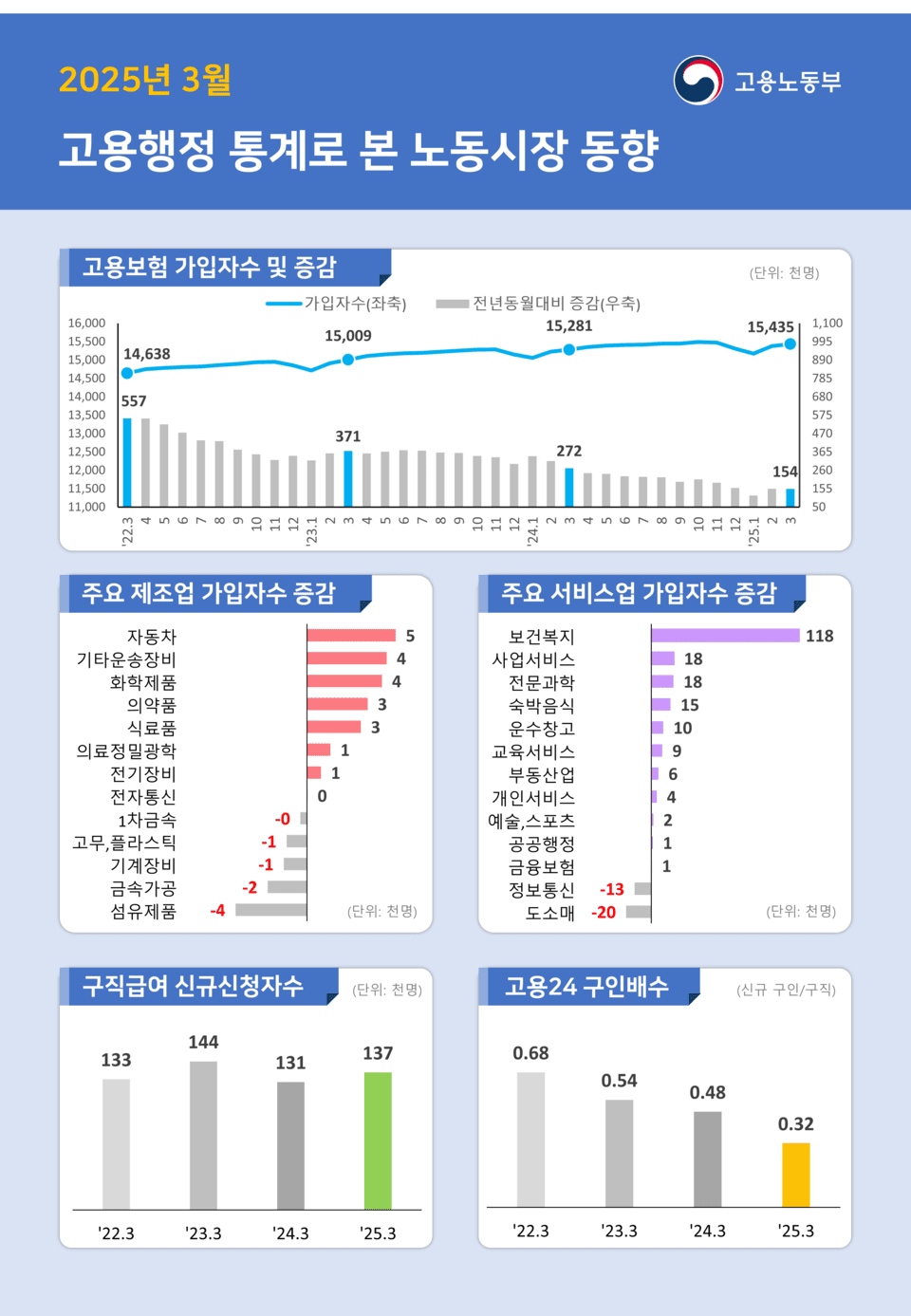The number of regular subscribers to employment insurance as of the end of March 2025 was recorded at 15,435,000, an increase of 154,000 compared to the same period last year. While the expansion of the service industry and some manufacturing sectors increased the total number of employment insurance subscribers, the construction industry continued its decline for 20 consecutive months, clearly showing employment disparities among different industries.
The service industry reached 10,688,000, an increase of 170,000 from the previous year, accounting for a significant portion of the overall increase. Healthcare and welfare industry saw a rise of 118,000, mainly around hospitals and non-residential welfare facilities, and the business service sector, including employment mediation and facility management, increased by 18,000. There was also a growth trend in accommodation and food, professional scientific technology, and transportation and warehousing. However, retail and information communication saw a decline in subscribers compared to the previous year.
The manufacturing industry recorded an increase of 6,000 from the previous year, totaling 3,846,000. The automotive sector increased by 4,600, focusing on the production of new parts and engines, and the other transport equipment industry saw an increase of 4,100 due to growth in ship and aircraft manufacturing. However, textiles, metal processing, and machinery equipment industries experienced a decline. Notably, both special-purpose and general machinery sectors saw a decrease in workforce.
The construction industry had 754,000 subscribers, a decrease of 21,000 from the previous year. The main cause of the decline was attributed to general construction industries, affected by a decrease in construction performance and contract indicators. It continues to be the only sector among all industries experiencing a long-term decline.
Regarding gender, female subscribers increased by 131,000 to 6,903,000, while male subscribers rose by 23,000 to 8,532,000. By age, those over 60 increased by 184,000, and those in their 30s increased by 67,000. However, there was a decrease in those under 29 (-104,000) and those in their 40s (-49,000), with the decline in the youth demographic particularly pronounced in information communication, retail, and manufacturing sectors.
The number of new jobseeker benefit applicants stood at 137,000, a 4.6% increase compared to the same month last year. The education service industry increased by 3,300, construction by 1,400, and manufacturing by 900, while there was a decrease of 1,600 in the healthcare and welfare sectors. The number of jobseeker benefit recipients increased by 38,000 to 693,000 from the previous year, with total payments rising by 8.4% to 1.051 trillion won.
According to job search and hiring trends through the employment portal ‘Labor 24’, new job postings decreased by 22.8% year-on-year, while new job seekers increased by 15.2%. As a result, the hiring multiple, which represents the number of jobs per job seeker, dropped to 0.32. Both women (+33,000) and men (+30,000) saw an increase in the number of new job seekers, with an even increase across all age groups.
The number of foreign workers newly incorporated into employment insurance under the employment permit system was 254,000, an increase of 24,000 from the previous year. Among them, 89.9% are concentrated in the manufacturing industry, necessitating caution when interpreting related statistics.
